Key takeaways:
- Nearly one-third of all food produced globally is wasted, with personal habits significantly contributing to this issue.
- Reducing food waste has environmental benefits, such as decreasing methane emissions, and can save individuals money by encouraging better shopping habits.
- Effective strategies to minimize waste include meal planning, using leftovers creatively, and practicing portion control.
- Composting food scraps at home transforms waste into valuable soil, highlighting the importance of understanding what can be composted.
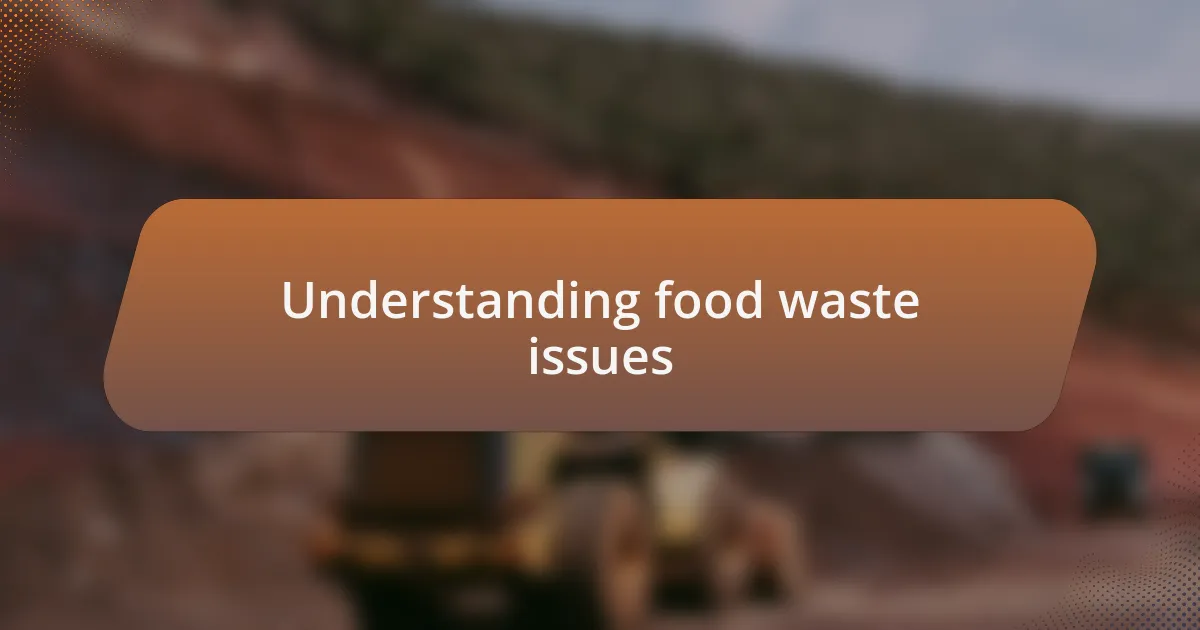
Understanding food waste issues
Food waste is a pressing concern that often goes unnoticed in our daily lives. When I first realized the staggering statistic that nearly one-third of all food produced globally is wasted, I was stunned. How could something so vital to our existence be treated so carelessly?
As I started examining my own habits, I noticed that items in my fridge often succumbed to the dreaded “forgotten” status. I can vividly remember the guilt I felt each time I tossed out wilted greens or unidentifiable leftovers. It made me ponder: how many resources—time, labor, and energy—were wasted alongside that food?
Understanding the reasons behind food waste is crucial. Often, it results from overly ambitious shopping habits or a lack of meal planning. Reflecting on my journey, I realized that creating a simple meal plan not only reduced waste but also saved me time and money. Isn’t it fascinating how small changes can have a significant impact?
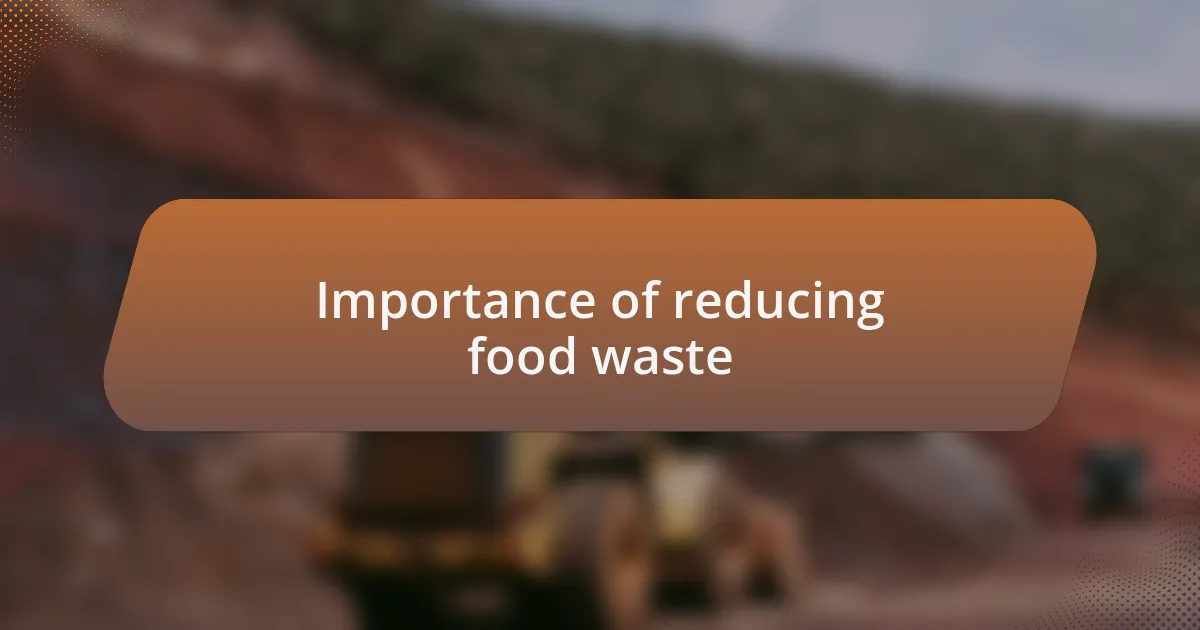
Importance of reducing food waste
Reducing food waste is critically important for both environmental and economic reasons. I remember the first time I learned that decomposing food generates methane, a greenhouse gas far more potent than carbon dioxide. It hit me hard; here I was, contributing to climate change every time I discarded a meal. Isn’t it astonishing to think our small kitchen habits could have such a significant impact on the planet?
From a personal standpoint, tackling food waste has taught me valuable lessons about sustainability and resourcefulness. I’ve begun repurposing leftovers into new meals, transforming what once would have been trash into nourishing dishes. This shift not only brings satisfaction but also revitalizes my creativity in the kitchen—who knew reducing waste could inspire culinary innovation?
Moreover, reducing food waste directly impacts our wallets. I often reflect on how much money I saved by committing to buy only what I need. Creating a shopping list based on meal planning allowed me to avoid those spontaneous purchases that always seemed like a good idea at the time. Hasn’t everyone experienced that pinch when we realize how much money goes straight into the garbage? Reducing food waste feels like a win-win—it’s beneficial for my budget and the environment alike.
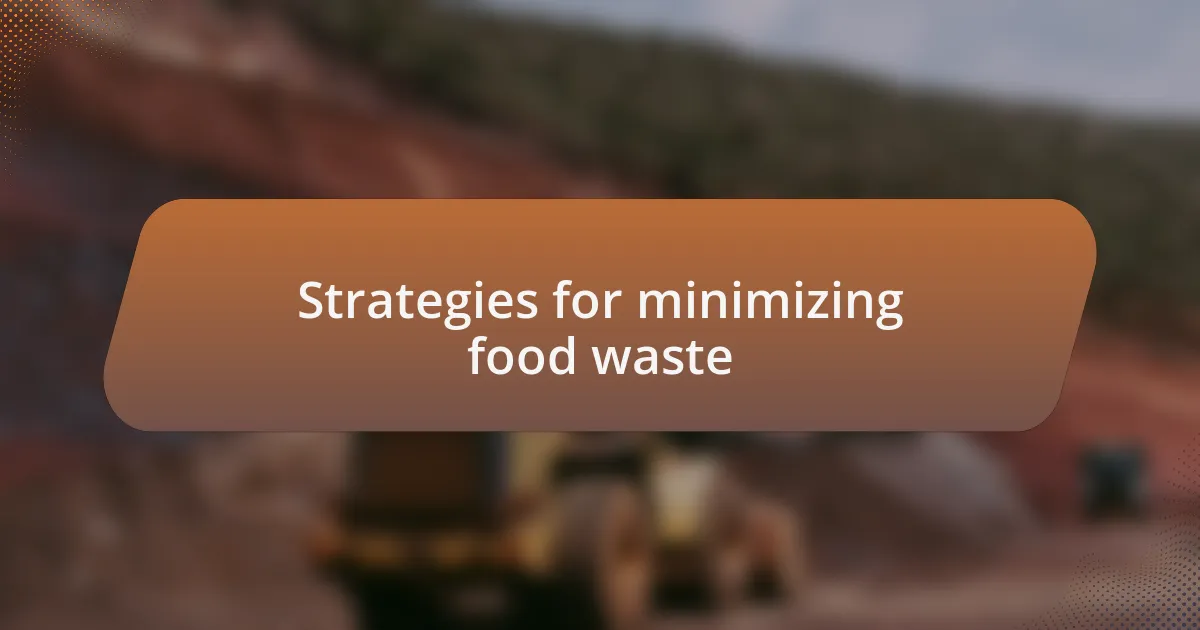
Strategies for minimizing food waste
One effective strategy for minimizing food waste is using a “first in, first out” approach in my pantry and fridge. I date my food items upon opening them; it’s surprising how a simple, handwritten date can remind me to prioritize older items. Each time I look at that little note, it feels like a gentle nudge to consume wisely, ensuring nothing gets pushed to the back and forgotten. Isn’t it amazing how such a small habit can transform my dining experience?
Regularly checking what I already have on hand before grocery shopping has become a game-changer for me. I remember a time when I bought ingredients only to find I had duplicates sitting at the back of the cupboard. Now, I have a quick survey of my stock, which not only saves me from unnecessary purchases but also inspires me to be creative with what I already own. It’s like a treasure hunt in my kitchen—who knew meals could be made from seemingly random ingredients?
Embracing smaller portions has also reshaped my dining habits. Initially, I hesitated, thinking I’d feel deprived. But I soon discovered that serving smaller amounts encourages me to savor each bite more and reduces the likelihood of leftovers. Isn’t it interesting how shifting our mindset can lead to more mindful eating experiences? By taking this approach, I’ve not only minimized waste but also enhanced my connection with food itself.
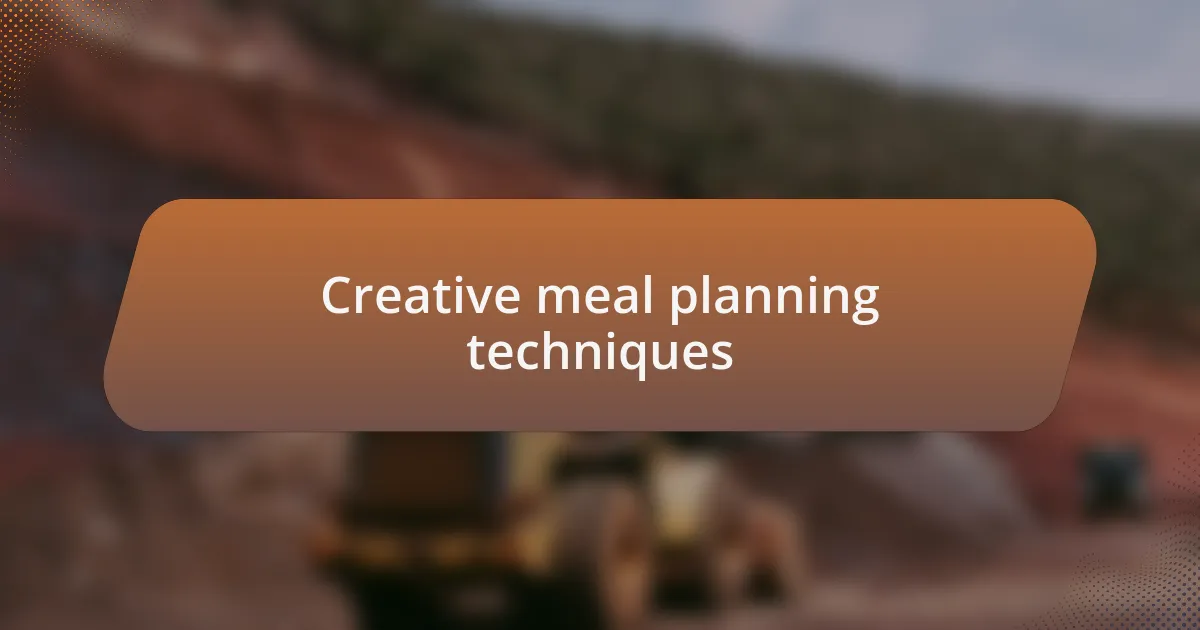
Creative meal planning techniques
Meal planning can be an adventure filled with creativity. I often dedicate a weekend afternoon to mix things up, looking through recipes with a specific theme, like “meatless Mondays” or “Taco Tuesday.” By choosing a theme, I limit my choices while still allowing my imagination to roam, making it easier to shop and reducing the chance of impulse buys. Have you ever noticed how a theme can inspire your cooking and transform a mundane meal into something exciting?
I also love to repurpose leftover ingredients into new dishes. For instance, if I’ve made a stir-fry, I might reserve some of the cooked vegetables to add to a frittata the next day. It’s like a culinary puzzle, piecing together what I already have into something fresh and delicious. The thrill of creating something new out of what might have gone to waste fills me with satisfaction. It really makes me appreciate the versatility of ingredients—doesn’t it feel gratifying to turn potential waste into a delightful dish?
Visual inspiration plays a big role in how I plan meals. I keep a digital folder of vibrant food photos that spark my imagination. When I’m stumped about what to cook, I scroll through that collection and instantly feel inspired to try something new or adapt a dish based on what I have on hand. I’ve learned that engaging my senses in this way not only prevents waste but also rekindles my excitement for cooking. What about you—how do you seek inspiration in the kitchen?
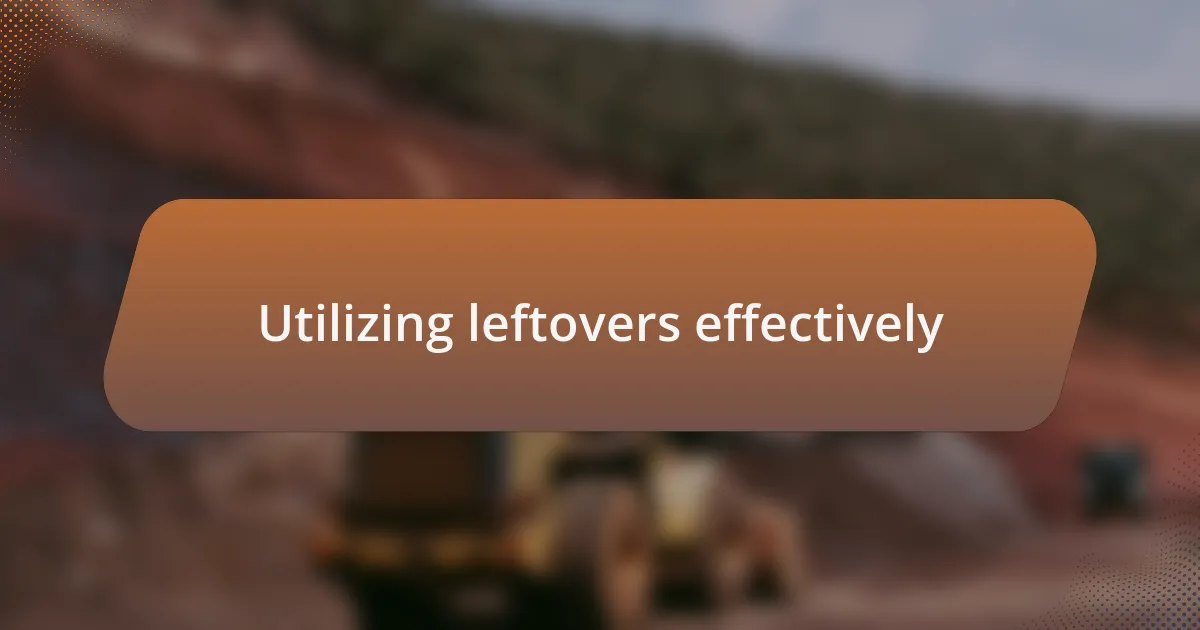
Utilizing leftovers effectively
When it comes to utilizing leftovers effectively, I’ve found that transforming them into something entirely new can be both fun and rewarding. For example, if I have leftover roasted chicken, I’ll often shred it and toss it into a hearty soup or a flavorful salad. This not only extends the life of the chicken but also provides a comforting meal that feels fresh and different from the original dish. Have you tried reinventing your leftovers in a similar way?
I also like to challenge myself with “Leftover Night.” One evening a week, I focus solely on using whatever is left in my fridge, no matter how random the ingredients may seem. It’s a great way to clear out the fridge while sparking creativity. I’ve made unexpected pairings, like a quinoa bowl topped with sautéed greens and a dollop of leftover hummus – surprisingly delicious! Don’t you think this approach adds an element of excitement to meal prep?
Additionally, I make it a point to store leftovers in clear, labeled containers. This simple strategy keeps them visible and more likely to be used rather than forgotten at the back of the fridge. There’s something satisfying about opening the fridge and seeing those neatly organized meals, urging me to reach for them rather than cooking something new. I wonder if a little organization could make a difference in your approach to leftovers, too?
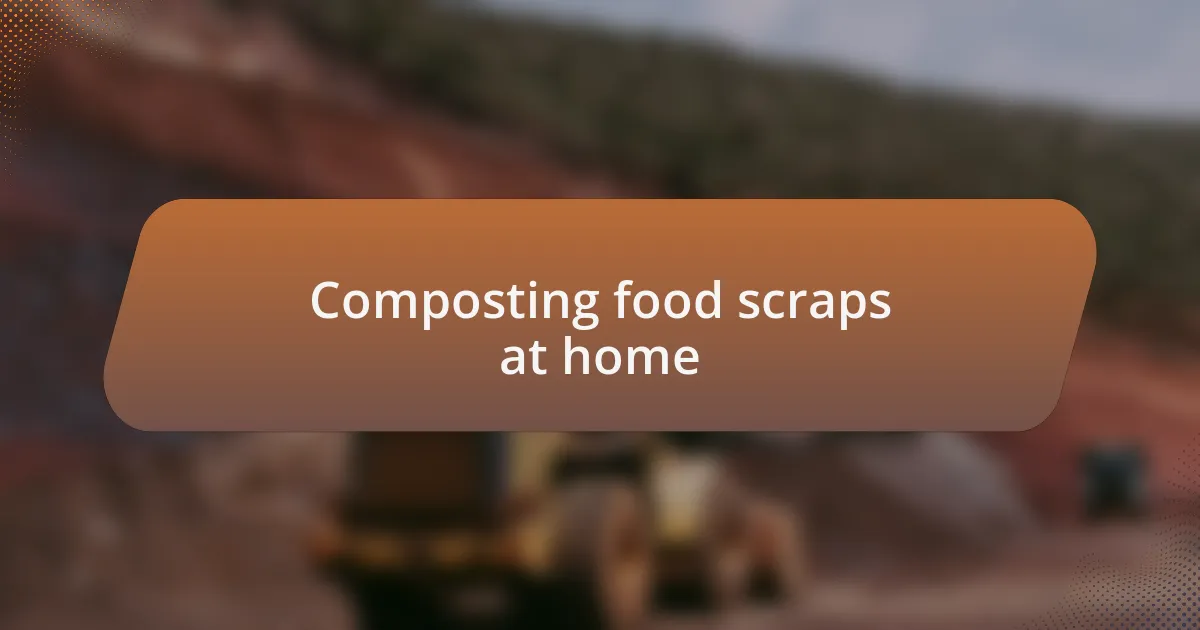
Composting food scraps at home
Composting food scraps at home has become a rewarding practice for me, turning what was once waste into nutrient-rich soil. I remember my first compost bin—it was a simple plastic container on my balcony. At first, I hesitated, fearing it would smell or attract pests, but to my surprise, it became a thriving ecosystem, and watching those scraps transform over time was truly fascinating. Have you ever witnessed the magic of composting firsthand?
Every week, I collect vegetable peels, coffee grounds, and eggshells, and instead of tossing them in the trash, I add them to my compost. It feels empowering to know that I’m reducing waste while nurturing my plants at the same time. I often get lost in thought while turning the compost, layering in fresh scraps and marveling at the rich, dark soil that ultimately emerges. Isn’t it amazing how what we once considered garbage can contribute to new life?
I also find it helpful to educate myself about what can and can’t be composted. Initially, I made mistakes—like adding dairy and meat, which attracted unwanted critters. Now, I’m more knowledgeable, and I enjoy the challenge of finding creative ways to compost items that would otherwise go to waste. It’s like a little adventure every time I look for new compostable materials! Have you thought about starting a compost bin and experiencing this journey too?